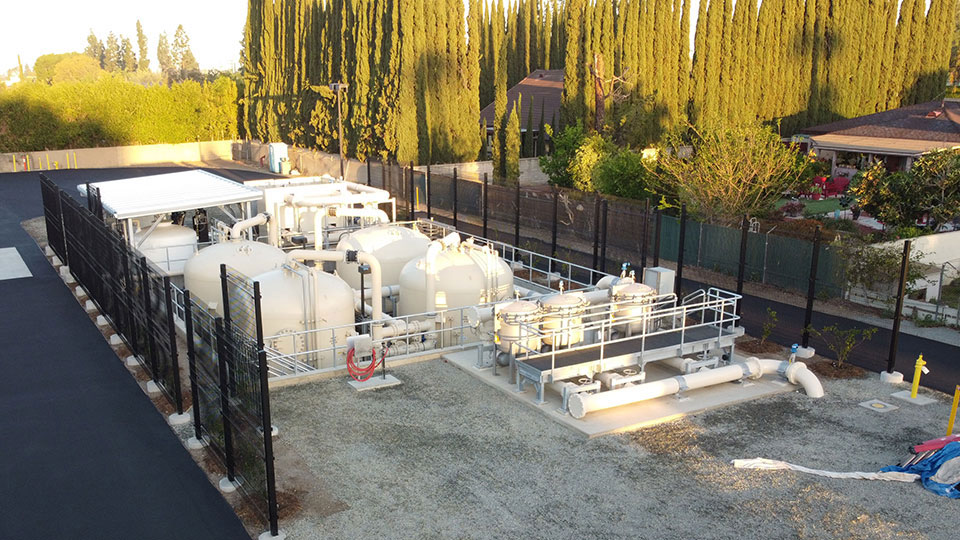How PFAS Treatment Reduces Environmental Impact and Improves Public Safety
Wiki Article
Ingenious PFAS Therapy Solutions for Safer Water
The boosting prevalence of PFAS contamination in water products necessitates a crucial exam of ingenious therapy services. Advanced purification innovations and unique chemical treatments existing promising opportunities for lowering these persistent contaminants. Additionally, emerging bioremediation strategies provide an even more sustainable strategy to tackling PFAS challenges. As regulative structures remain to adjust, understanding the efficiency and scalability of these remedies becomes extremely important. What implications do these improvements hold for public health and ecological remediation, and just how can stakeholders effectively execute them in varied contexts?Overview of PFAS Contamination
PFAS contamination has become a considerable environmental and public health and wellness worry. Per- and polyfluoroalkyl materials (PFAS) are a team of synthetic chemicals known for their determination in the atmosphere and human body, leading them to be frequently described as "for life chemicals." These substances have actually been widely made use of in various industries, including firefighting foams, water-repellent materials, and food product packaging, primarily due to their water- and grease-resistant homes.The extensive usage of PFAS has caused their discovery in soil, water supplies, and also in the blood of human beings and animals. Research studies have linked PFAS exposure to numerous health issues, consisting of developing impacts in infants, body immune system disorder, and different types of cancer. In addition, the environmental determination of these compounds complicates their degradation and removal, raising problems concerning long-lasting ecological influences.
Regulative bodies are increasingly implementing rigorous standards to monitor and decrease PFAS levels in drinking water and other ecological tools. As recognition of PFAS contamination grows, it has ended up being essential for communities and markets to seek efficient treatment remedies to reduce direct exposure and secure public wellness.
Advanced Filtration Technologies
As the seriousness to resolve PFAS contamination increases, progressed filtering technologies have become an essential part in the remediation initiatives targeted at getting rid of these consistent chemicals from water resources. These technologies utilize sophisticated devices to effectively target and catch PFAS substances, which are notoriously immune to standard treatment approaches.One of the most encouraging methods is the usage of granular turned on carbon (GAC), which adsorbs PFAS molecules because of its high surface location and porous structure. This technique has actually been widely carried out in both municipal and industrial settings, showing substantial reductions in PFAS concentrations. Furthermore, ion exchange materials have actually gained traction, specifically made to selectively bind PFAS ions from water, therefore promoting their elimination.
Membrane layer filtration innovations, such as reverse osmosis and nanofiltration, likewise reveal efficacy in PFAS removal by physically separating pollutants from water - pfas management. These systems can accomplish high degrees of pureness, making them ideal for alcohol consumption water applications
Chemical Therapy Advancements
Countless chemical therapy innovations are being explored to efficiently attend to PFAS contamination in water products. One encouraging strategy entails using sophisticated oxidation processes (AOPs), which make use of effective oxidants such as ozone, my latest blog post hydrogen peroxide, or chlorine dioxide incorporated with UV light to damage down PFAS substances right into much less harmful substances. This approach has actually shown efficacy in laboratory setups, revealing prospective for scalability in real-world applications.One more ingenious technique is the development of ion-exchange resins especially made to target PFAS. These materials can uniquely adsorb PFAS compounds from water, allowing for their removal throughout treatment procedures. Current innovations have actually improved the efficiency and ability of these materials, making them a positive choice for water treatment centers.
Furthermore, researchers are exploring making use of chemical agents like persulfate and ferrous ions to boost the destruction of PFAS in polluted water. These representatives can generate chemical reactions that help with the breakdown of persistent PFAS compounds.
Emerging Bioremediation Methods
Recent advancements in chemical therapy developments have actually paved the means for checking out bioremediation techniques as a viable choice for dealing with PFAS contamination. Bioremediation harnesses the all-natural metabolic procedures of bacteria to weaken or transform toxins, making it an attractive approach for dealing with persistent pollutants like PFAS.
Arising techniques in bioremediation consist of the use of genetically engineered microbes that can specifically target and damage down PFAS compounds. These microbial stress are being created for their improved destruction abilities, boosting the effectiveness of the removal process. Furthermore, scientists are examining the possibility of plant-assisted bioremediation, where certain plant types might uptake and sequester PFAS from polluted dirt and water.
An additional encouraging technique is the application of bioaugmentation, which involves introducing helpful microbes into contaminated atmospheres to improve the destruction of learn the facts here now PFAS. This approach can facilitate quicker remediation timelines and boost total effectiveness.

Governing Structures and Requirements
A comprehensive regulative framework is necessary for properly taking care of PFAS contamination and guaranteeing public health security. The raising recognition of per- and polyfluoroalkyl compounds (PFAS) as ecological pollutants has actually triggered different government and state firms to create standards that govern their presence in water materials. The U.S. Environmental Defense Company (EPA) has actually established health advisories and is pursuing setting enforceable restrictions for PFAS in drinking water.State-level regulations differ significantly, with some states taking on stricter guidelines than those recommended by the EPA. These guidelines frequently consist of optimum contaminant levels (MCLs) for specific PFAS compounds, surveillance demands, and reporting responsibilities for water utilities. Furthermore, emerging frameworks concentrate on the removal of contaminated sites, stressing the need for reliable treatment innovations.

Verdict
In verdict, the development and execution of ingenious PFAS treatment options are crucial for attending to the pervasive problem of water contamination. Advanced filtering innovations, chemical treatments, and arising bioremediation methods collectively offer a diverse approach to effectively lower and break down PFAS levels. As regulatory structures remain to advance, incorporating these technologies will certainly be important to secure public health and recover the integrity of infected water sources, inevitably adding to a cleaner click here now and more secure atmosphere.Report this wiki page